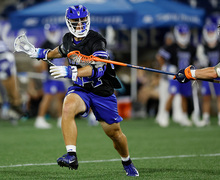Smith: Sports Illustrated has the power to diversify beauty standards
Sports Illustrated recently released its swimsuit edition and debuted its first ever plus-sized model. Readers and columnists around the country applauded the magazine for moving forward, while others shamed them for considering these models as plus-sized to begin with.
Besides labeling average sized women as plus-sized, these models still conform to traditional beauty standards. Magazines need to embrace bodies of all sizes.
Sports Illustrated featured a model Robyn Lawley who has fluctuated between a size 12 and size 14. The magazine also an ran advertisement with Ashley Graham who is a size 14. Taking one moment to Google these women, it is hard to see differences between them and the cover model, besides Lawley’s six-foot-two stature. But for a magazine that is notorious for showing thin, tan, big-busted women, this shows a little bit of branching out — but not far enough.
Magazines, like most media, are trying to sell. And Sports Illustrated’s swimsuit edition has become one of Time Inc.’s biggest revenue suppliers, boasting profits of more than a billion dollars according to Forbes.
If people are still buying and those numbers are increasing, Sports Illustrated sees no reason to change its methods — or shapes. Sports Illustrated and magazines alike should take the challenge and try putting a woman who is a different shape on the cover or incorporate a variety of body types in editorials.
A little over a decade ago, Sports Illustrated put Tyra Banks on the cover alongside another model, then a year later in 1996, Banks got the cover to herself becoming the first African-American model to earn the spot. That issue was one of the highest selling covers to date, clearly showing diversity and change can be profitable.
At Banks’ acceptance speech she said, “A lot of the women here say it was their dream. But it wasn’t my dream, because I didn’t think it was possible. And I didn’t think it was possible because of the color of my skin.” Banks thanked Sports Illustrated for being daring, and giving young African-American girls someone to relate to.
This speech could easily substitute color for shape if Sports Illustrated decided to be daring yet again. However, many editors that work for these companies seem to resist change when it comes to the dress size.
“The models we are used to seeing are super-slim, and not very representative of the real world,” said Kirstie Clements, former editor-in-chief of Vogue Australia.
If top executives realize that their models are not representative of their readership, yet do not bother changing the system, this issue is not going to fade. There must be more outlets that people are willing to view and subscribe to that will show the body shapes people want to see.
In an effort to change the norm of never ending slim models, Caitlin Stasey of the CW’s show “Reign” launched a website titled Herself. The website shows nude women of all colors and sizes with interviews attached. “Let us reclaim our bodies. Let us take them back from those who seek to profit from our insecurity,” Stasey said on her website.
This website allows any woman to participate and is a step in the right direction — or at least a direction that gives readers the opportunity to choose who they want to see. As this website is still in its developing stages, we will have to wait to see its success. But if this website becomes widely viewed, maybe Sports Illustrated can follow its lead and embrace women of all sizes.
Julia Smith is a junior newspaper and online journalism and sociology dual major. Her column appears weekly. She can be reached at [email protected] and followed on Twitter @jcsmith711.
Published on February 16, 2015 at 12:33 am




